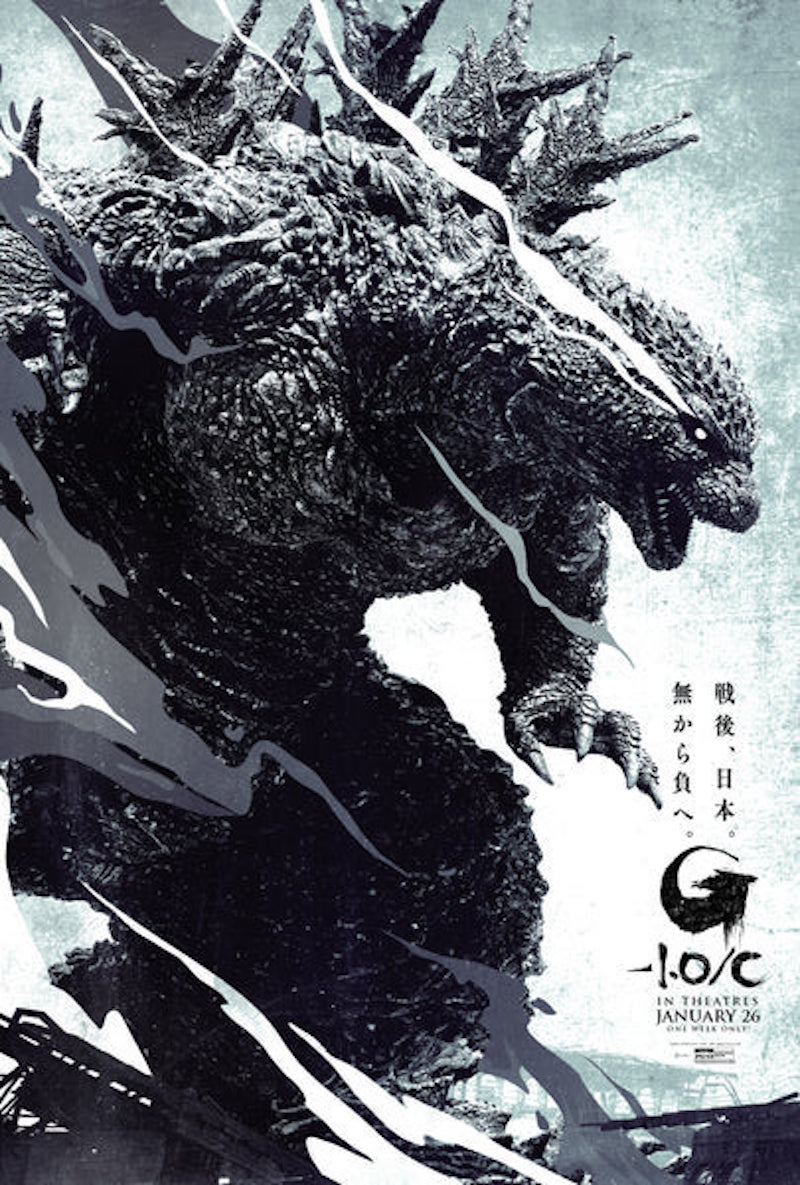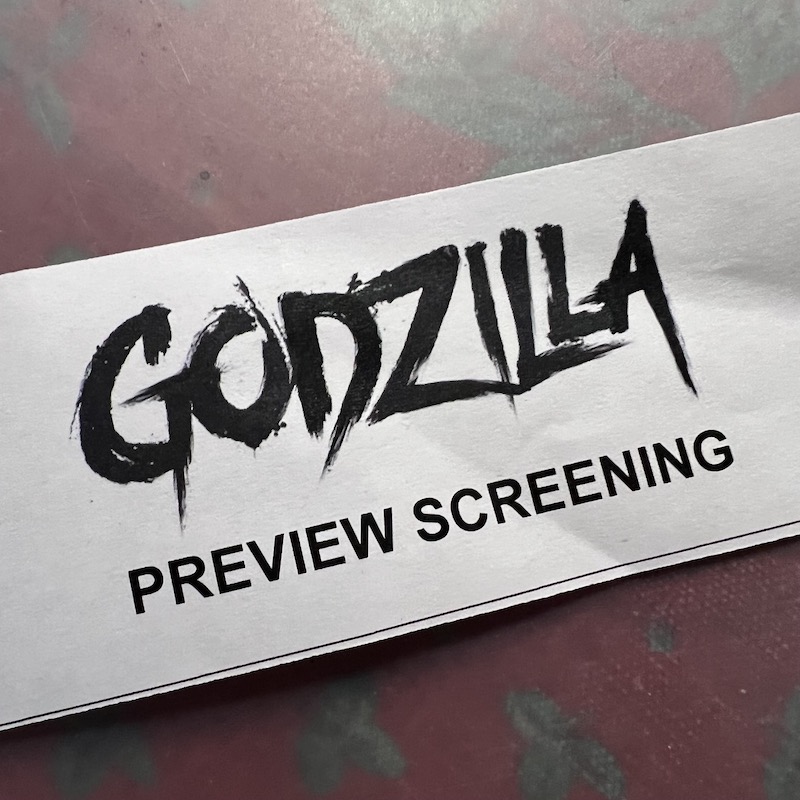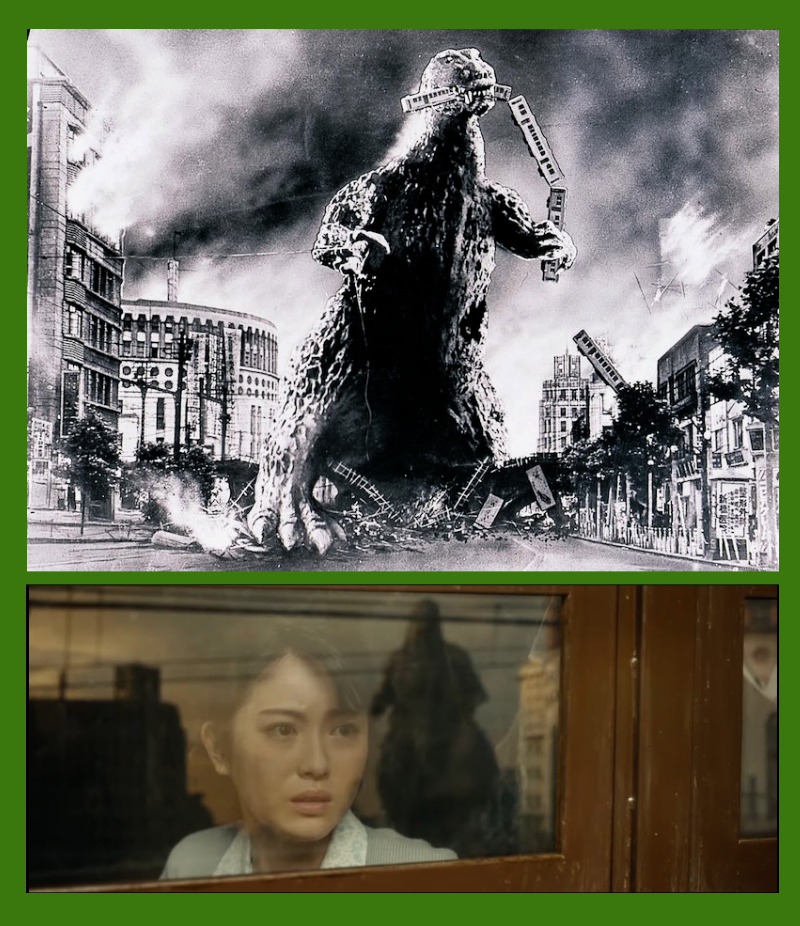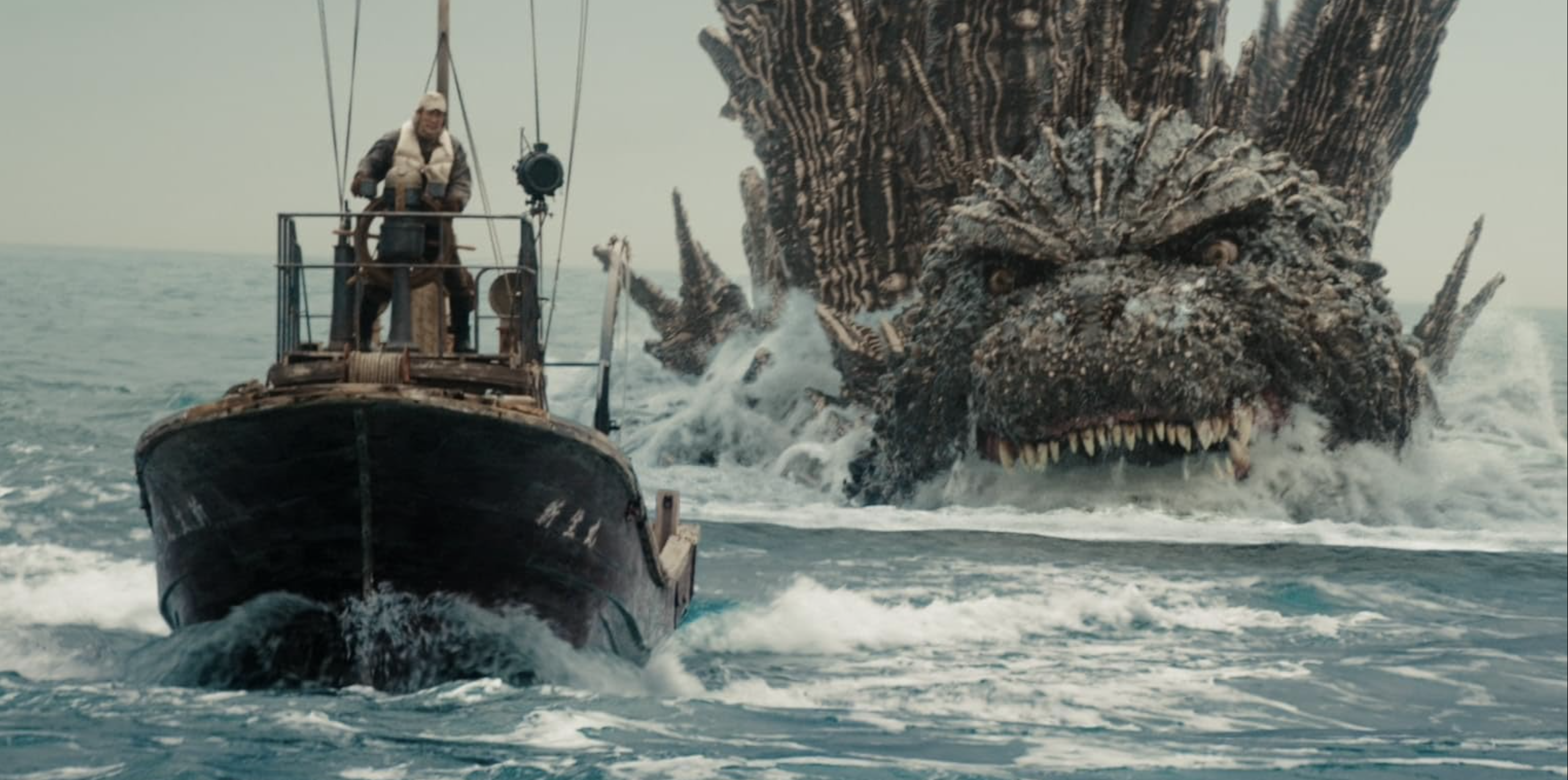
Desaturation Nation…
Godzilla Minus One has begun its final week in North American theaters. The newest installment of the 70-year King of the Monsters saga will be highlighted on the big screen by a black-and-white version through its last screenings on February 1, 2024.
Director Takahashi Yamazaki notes that the “minus color” iteration “is not just a simple black and white version,” […] “The colorist took the care and the time to go through a careful and very complex process. The black-and-white images make Godzilla look very realistic […] which leads to even more fear.”

Godzilla Plus Me…
I had the good fortune to prevue the standard G-1.0 at the Japan Society theater in New York City, and have been ruminating on it since. There’s a lot to consider. I could say Godzilla Minus One (2023) is not your grandfather’s Godzilla movie, but in fact, it is in many ways. I think that’s a good thing.
Those of us who grew up on television viewings of the Americanized (“Perry Mason”) version of Gojira (1954) will remember its grim and visceral frisson. The injection of actor Raymond Burr as reporter Steve Martin may be one of the few times a film’s rejiggering for a foreign audience worked in its favor. His stoic, matter-of-fact, recounting of the monster’s attack and aftermath gives the U.S. version a newsreel believability.
Citing Godzilla as an analogy for the horror of nuclear holocaust has become an accepted metaphor, but as grim as it is, mid-century Western audiences had little idea of the cultural underpinnings of the Japanese original. Over a half-century later Toho Studios‘ Godzilla Minus One thrusts us directly into the Japanese vision of Godzilla’s post-World War II subtext.
Presented as a gigantic saurian samurai – sentient and wrathful – the monster is scary as hell. So are the circumstances it forces on humankind. Deftly entwining the struggles of individual characters against the city annihilating power of the beast is where (and why) Godzilla Minus One excels. The other kaiju of G-1.0 are, in actuality, the daily struggles for survival in a war-ravaged cityscape and the thin-line choices between duty and self-preservation, valor and reckless insanity.
Inside Looking Out…
Applying art house elements to a franchise that has weathered a half-century of stylistic manipulations treads a perilous course. Yet director Yamazaki accomplishes it with care and an eye to what made Gojira compelling. His interweaving of inward and outward action engages the audience with a sense of authenticity. We can empathize with the main characters Koichi (Hidetaka Yoshioka) and Noriko (Minami Hamabe,) as we did with Emiko, her father Dr. Yemani, and Dr. Serizawa in the original. They are grounded in real-life concerns, both personal and world politics. In G-1.0 Koichi’s effort to regain self-respect and expunge recrimination and loss of honor in his community is at the film’s heart. Then there’s that 400-foot radioactive monster.

Godzilla Minus One pays homage to its history by amplifying several of the Gojira’s most indelible visuals, as well as some from other cinema classics. For instance, the original monster’s train munching rampage is expanded into a harrowing set piece featuring the heroine and the scene of Godzilla chasing a small mine-sweeping boat that carries the core of the cast, is akin to the heart-stopping action of Jaws.

Nods to the eccentricities of Godzilla’s mid-‘seventies Showa Era is limited, but present. In particular, the Rube Goldberg-worthy method concocted to kill minus one Godzilla makes the Oxydestroyer capsule seem like dropping an Alka-seltzer tablet in the ocean by comparison. That noted, it’s not as outlandish as creating a MechaGodzilla to fight the real one.
SkeletonPete Says…
Godzilla Minus One is a greater film overall than it is a great monster film. It stands outside of the popular culture baggage that the titular monster has often been burdened with. That may pose a conundrum for hardcore fans of big battling kaiju, but it has not stopped the film from becoming the highest-grossing non-English language film in North American box office history. Not surprisingly, it is also nominated for an Academy Award in the Best Visual Effects category.
Ultimately, Godzilla Minus One restores honor to the franchise in effective but unexpected ways.